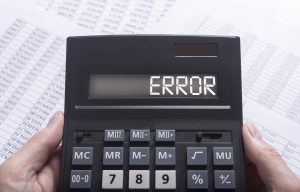Payroll is one of your company’s biggest expenses representing 30 to 50% of all of your expenses depending on your industry. Your employees are one of your greatest assets. It is your company’s (or “plan sponsor”) fiduciary responsibility to ensure employees are paid correctly and that their retirement plan contributions are calculated appropriately and in line with the company’s retirement plan provisions. Unpack the Why, How, & When to Reconcile Payroll and What the TPA Needs for Census.
The employee and payroll data reconciliation need to be done before a pension audit. (Some people get this in the wrong order.)
Why Reconcile Payroll
The payroll and the associated retirement plan must pass an annual audit, or the plan could be disallowed, even closed altogether. The hassle factor and associated fines and taxes pale compared to the heartache of informing your loyal employees of such an event.
How to Reconcile Payroll
For payroll reconciliation, a payroll clerk (human resources employee, etc.) compares the payroll register with the amount the company plans to pay its employees to ensure the numbers match. There are many sub-steps to proper payroll completion. These six main tasks should be repeated at every payroll, the numbers checked quarterly and then annually.
- Check the payroll register for correctness
- Verify employee time cards
- Double-check each employee’s pay rates
- Triple-check payroll deductions
- Submit payroll for payment
- Record the payroll numbers in the general ledger
It’s also a good idea to randomly spot-check the payroll numbers and reconcile them every few months to find out if any errors are growing like mushrooms in the dark recesses of your payroll forest. There are many good reasons to reconcile your payroll, but one of the most important (besides keeping the trust of your employees intact) has to do with the retirement plan’s very existence.
When to Reconcile Payroll
Reconciling payroll should be done every pay period. It needs to be done quarterly (for the 941) and annually (for W-2s), of course. But it also has to be done annually (between January and March 15) for the retirement plan to be sure any excess contribution checks go to employees before March 15th. The company must do the reconciliation BEFORE the figures go to the TPA.
To be safe, put a reminder on your calendar to do the reconciliation the first two months of the year.
What the TPA Needs for the Payroll Census
The details of the payroll census items follow. The plan sponsor prepares the employee census annually. For each employee in the company (don’t forget terminated/past employees) that were eligible to participate in the company’s retirement plan AND those that were NOT eligible to participate, the following data need to be collected:
- Social security number
- Name(s)
- Birthdate
- Hire date(s)
- Number of hours worked during the year
- Termination date (if applicable)
- Annual gross compensation (determined by the definition of ‘compensation’ in the plan document)
- The employee’s contribution for the year
How to Ensure Accuracy of the Employee Census
Every step along the way builds on the last.
Step 1 Reconcile total annual gross compensation and employee contribution per the census to annual payroll data (such as the year-end payroll report or W-3 Summary) to make sure that you have a complete listing of employees.
Step 2 Review each employee’s details to confirm you are not missing data or have additional data. Check the name! What if they married during the year? What about the hire date(s)—were they re-hired?
Step 3 Perform random tests of employees listed on the employee census to confirm that the data included in the census correctly match with forms in the employee’s personnel files. (Did they move? Are they working part of the year in a different state or country? Are state or country withholding amounts different? Were they adjusted accordingly throughout the year? See the LSL blog post on remote employees.)
After the plan sponsor has provided the data to the TPA, the TPA then uses the data to complete the required annual compliance testing to ensure that the plan complies with the plan provisions and is in-line with Department of Labor and Internal Revenue Code’s current rulings. If the TPA finds that the data do not pass certain compliance tests (such as the ADP—Actual Deferral Percentage—test), then the company must take corrective action for the plan to preserve its qualified standing.
If the plan fails the ADP test, the corrective action would be to refund the excess contribution to the appropriate employee. DISTRIBUTION for EXCESS contributions must be made to employees by MARCH 15, and NO LATER than DECEMBER 31. If payouts are made too late, then the reimbursement becomes a “prohibited transaction,” and the company puts itself at risk of having its retirement plan closed for lack of compliance with DOL laws or may be required to pay penalties.
As we’ve said many times, it’s a lot better to do your reconciliations on time and correctly the first time.
Conclusions and Recommendations
Your CPA cannot prepare both your payroll reconciliation and perform the annual audit of the plan. The plan sponsor has the fiduciary responsibility to perform the payroll reconciliation in a timely manner. Please make sure you start your payroll reconciliation and your internal audit of the payroll numbers and census data well ahead of sending it to the TPA. It’s sound accounting and good business.




